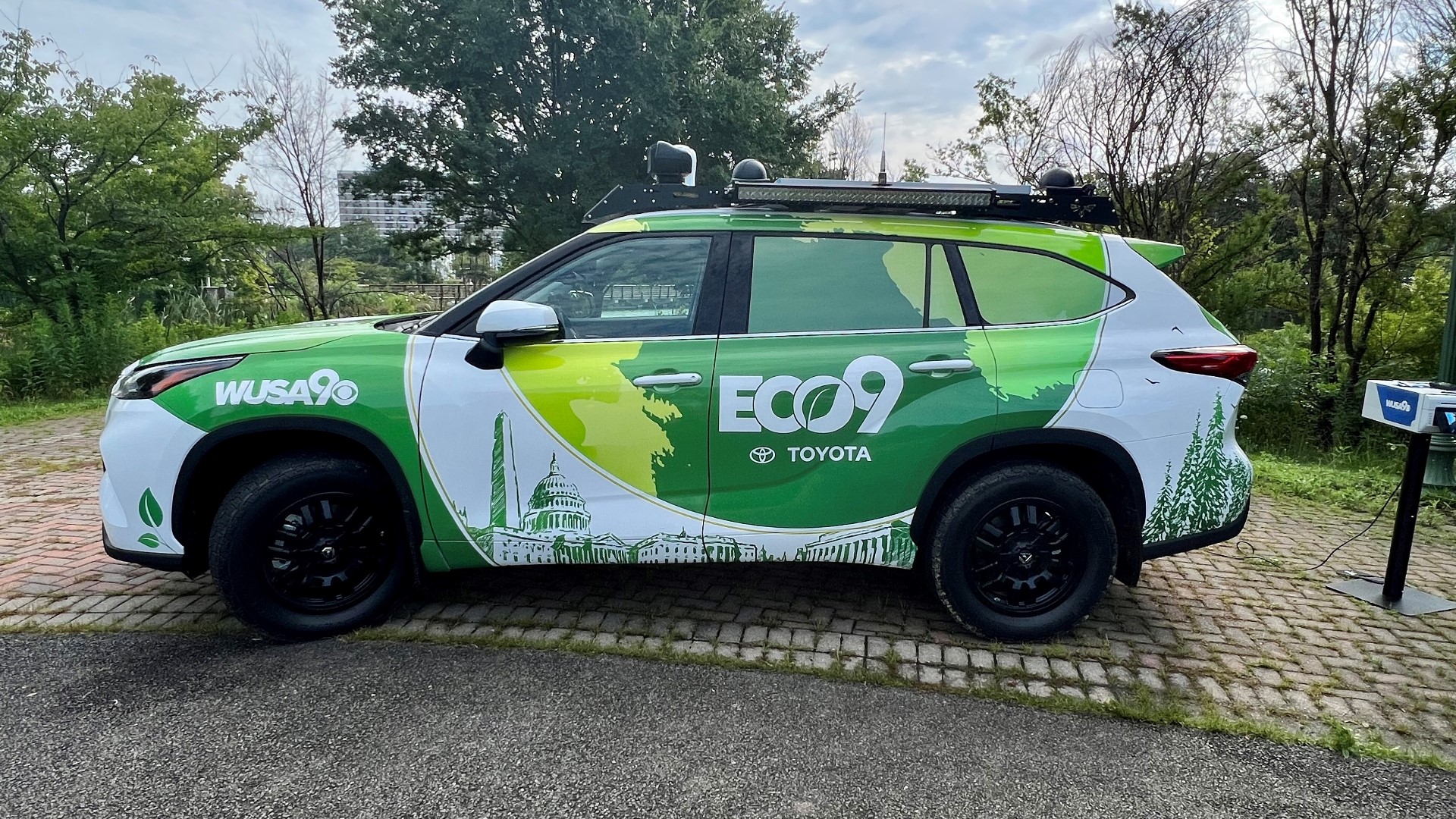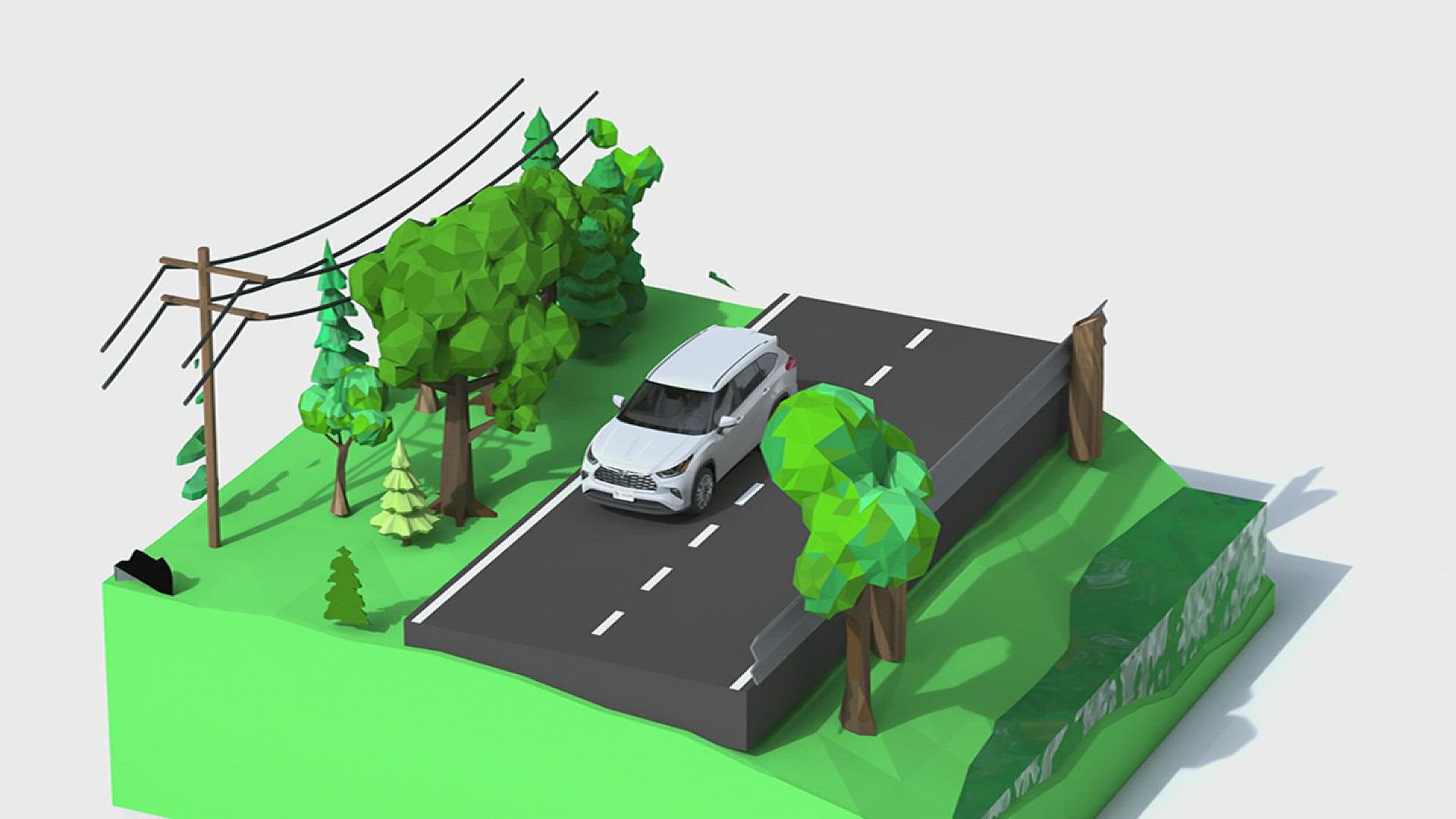WASHINGTON — Here at WUSA9, we know our environment matters, and we are committed to covering climate change and the environmental impacts in the DMV. It's one of the reasons we've partnered with Toyota to engineer a first-of-its-kind eco-hybrid news car, named ECO9.
WUSA9's ECO9 vehicle was designed with the goal of sharply reducing carbon emissions from newsgathering and live broadcasting by combining several energy-saving technologies for the first time in the industry.
“Our environment matters, and we’ve committed to making a positive impact through our work, which includes today’s introduction of ECO9,” said Richard Dyer, president and general manager of WUSA9. “ECO9 might be the first of its kind, but we hope it will be a standard setter as we begin testing its capabilities here in the DMV.”
ECO9's foundation is a 2022 Toyota Highlander XLE Hybrid that WUSA9 and engineers significantly modified at Frontline Communications, a builder of newsgathering vehicles. The modifications include the addition of a solar-supported lithium-ion battery system to operate the array of broadcast electronics in the vehicle.
The system eliminates the traditional need to idle the vehicle or run a generator to create the power to broadcast live, according to Rob Gibson, WUSA9’s director of technology and operations. This will reduce the overall carbon emissions of operating the vehicle while broadcasting, Gibson said.
“Before you would have to sit and run the engine for however many hours you were out in the field going live in order to power this rack," Gibson said as he pointed to the live electronics in ECO9. "Now you don't need to.”
Vehicle idling is a significant source of carbon emissions, according to Mark Smith, the technology integration program manager of the U.S. Department of Energy.
"It's a very important step in reaching decarbonization in transportation, which is a goal we have here at DOE," Smith said.
The guts of the ECO9 broadcast system are powered by a LiFePO4 lithium-ion battery, which consists of a chemical compound that makes it one of the safest batteries on the market. Commonly used in mobile phones, RVs, boats and golf carts, the battery is also the ideal choice for ECO9 as it is expected to handle more than 5,000 cycles and can discharge close to zero and recharge.
Solar supplemental charging is provided by two panels installed on the roof allowing ECO9's broadcast equipment to recharge during the day while it is out in natural light. Meanwhile, the hybrid vehicle is expected to reduce carbon emissions as crews navigate to assignments.
According to the U.S. Department of Energy Alternative Fuels Data Center, on average hybrid vehicles emit 6,258 pounds of CO2 annually compared to 11,435 pounds of CO2 produced by a standard internal combustion vehicle.
ECO9 is equipped with three cameras – two fixed internal and one 360-degree external – to allow weathercasting and reporting teams to report live while in motion.


